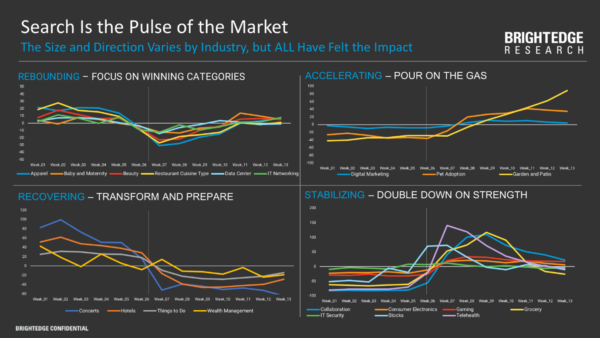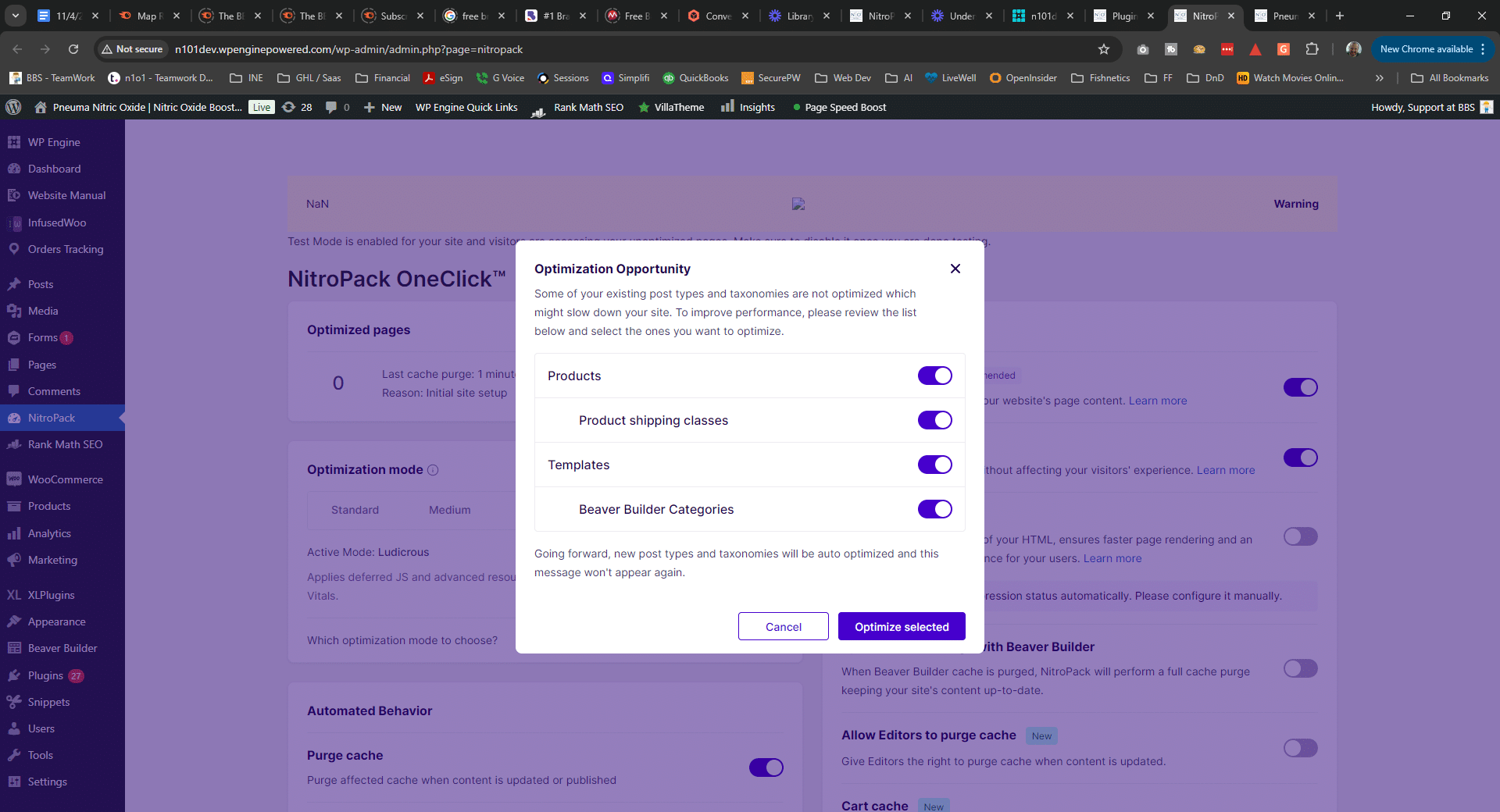Even when analysts predict an economc downturn, one thing is still certain: consumers will use search engines to find the information they’re looking for. Because of this, big brands are starting to refocus their efforts and budgets from paid advertising to SEO. The good thing about SEO, is it is not only cost-effective, but may be the SEO strategy that will help your company weather an economic fluctuation. During a recession, customers may not be as willing to give you their dollars, but the algorithm will always stay updated to reflect the content that is out there and what users are searching for. The best thing you can do is use SEO insights about demand and intent to keep your SEO strategy up to date. Be aware of what’s changing and adapt your content and approach accordingly. It’s often not the content but rather the content strategy that will help you weather a storm. If you have any questions about your SEO strategy or want us to handle it for you, reach out to us at Prebuilt Sites or The BBS Agency. We’d love to help you out!
While some analysts predict a downturn in the economy, two facts are predictable: Consumers will still use search engines and executives will make kneejerk reactions to splash spending.
I speak daily with Fortune 500 brands refocusing efforts and budgets from expensive paid advertising and doubling down on SEO. They see good SEO practices not only as a cost-effective channel but as a strategy that works in any economic fluctuation. But the latter only happens when the company creates and updates content aligned with the evolving consumer intent.
Google’s recent “helpful content update” reflects that. The algorithm update penalizes websites with large amounts of content that doesn’t help the reader – content written for the sole purpose of search engine rankings.
Let’s look at how you can use SEO insights about demand and intent to weather the market.
Use SEO data as informational research
SEO data provides real-time customer insights, which are essential during tumultuous market conditions, to inform content, product, and sales. Seventy-one percent of marketers say SEO data does or will feed directly into their company’s business intelligence.
During the peak of the global pandemic, SEO insights (like the ones below) informed marketers about consumer demands and interests. For example, search volumes for keywords related to digital marketing, pet adoption, and garden and patio categories were below average the weeks before the pandemic hit but skyrocketed afterward. While the opposite happened for keywords around concerts, hotels, and things to do, they were above average in the weeks before the pandemic but plummeted when it hit.
At a macro level, when SEO data reveals purchase intent is low, brands can elevate content designed to educate, inform, and build trust with key audiences.
SEO data also can help you tap into new and evolving opportunities that arise from market fluctuations, competitive landscape changes, and Google algorithm updates.
Be ready to evolve as the economy does
Being a first-mover pays dividends in different economic climates. To move first, you need a content strategy already in place for when the downturn slowly shifts upward. Let’s break down the possibilities:
- Stabilizing: Focus on crucial in-demand trends and intent and content topics.
- Rebounding: Focus on helpful, valuable, and converting categories.
- Recovering: Prepare new content informed by keyword content analysis and optimize key content pages – fixing errors that would hamper the future user experience.
- Accelerating: Look at high-demand trends and capitalize on those SEO and content opportunities right now.
Using SEO-focused content for maximum effect in challenging conditions likely requires changes to your content marketing strategy. It also requires ongoing work to ensure it’s implemented effectively.
HANDPICKED RELATED CONTENT:
Tips for implementing an agile SEO strategy
SEO isn’t something you “do” to content after it’s produced. Using search insights to inform content ideation, design, and discovery optimization requires a cohesive and collaborative process. Here are some of the steps necessary to achieve this success:
1. Measure what matters right now
Make sure your measurement strategy aligns with your current SEO strategy. For example, conversion metrics for sales may have been the most important in a booming economy, but the lower funnel goal may not be as relevant now. Instead, you might prioritize a top-of-funnel goal, like optimizing for relevant queries where you have helpful and insightful content to engage with prospects.
You should harvest metrics on search rankings for specific keywords, click-through rates from search, on-site visitor behavior, etc., to assess what content is working and what content is not as successful.
TIP: Don’t forget about measuring competitor intelligence, too. Look for gaps where your company could be the one to provide information or answer a question. Data is in many ways “the voice of the people” so ensure you utilize this to stay informed on current and activate insights in real-time.
HANDPICKED RELATED CONTENT:
2. Tailor content to current needs
SEO insights also can inform the content focus each month and quarter. For example, you might discover fewer searchers are interested in comparison content or display commercial intent related to your industry or topic. Therefore, you won’t create any new content related to purchase intent.
You should produce engaging educational and informational content to drive discovery by new audiences. Adjust your content planning to address evolving audience interests based on keyword search volumes and levels of competition for relevant keywords. Also, consider the content opportunities to best your competitors who are ranking well for target keywords.
3. Understand your content planning horizons
Set realistic expectations for the content you’re producing and its role in the future. How might it feed consumers’ needs today? What purpose will it serve next year? How will you promote, update, and continue to invest in that content so that it performs as anticipated three years from now?
To accomplish this, conduct longitudinal research to identify trending keyword lists and update it as the market evolves. Use your SEO insights to plan content that aligns with the non-linear customer journey and feeds their various search intents.
Be unique and write high-quality content. Follow Google’s expertise, authoritativeness, and trustworthiness (EAT) guidelines as they will grow in importance in terms of what expertise and trustworthiness will be rewarded.
And do not overoptimize your content – it will work against you.
4. Be ready to adapt
Revisit your content optimization strategy often as market conditions and consumer behaviors change. For example, content initially optimized for relevant terms and intent optimized might be ready for updates as searchers and site visitor interactions evolve.
Update the title tags, meta descriptions, subheads, images, and text in line – and don’t forget about readability and accessibility.
As per Google’s helpful content update (HCU), work closely with content teams and ensure:
- Your content is aligned to a specific target group.
- Your author has (and can show) knowledge of the subject matter.
- Your website content clearly shows your main purpose.
- Every content consumer learns something from your content.
Use SEO insights to feed your content planning and spot new opportunities for content repurposing. For example, a well-performing piece of content can be transformed into socially shareable images, video clips, presentation decks, infographics, email copy, and assets for sales and customers.
Streamline your internal processes to avoid misalignment and bottlenecks. Build a content culture across your organization that helps with production velocity and cadence.
HANDPICKED RELATED CONTENT:
Make your SEO strategy always on the upswing
When economic and market conditions call for tightening of the purse strings, they also call for a renewed look at your content’s SEO strategy. Forward-looking marketers take the necessary steps so their content works better for search conditions now. They also are ready and equipped with an optimization strategy that evolves along with economic and industry trends and best practices.
Originally published on Content Marketing Institute.






